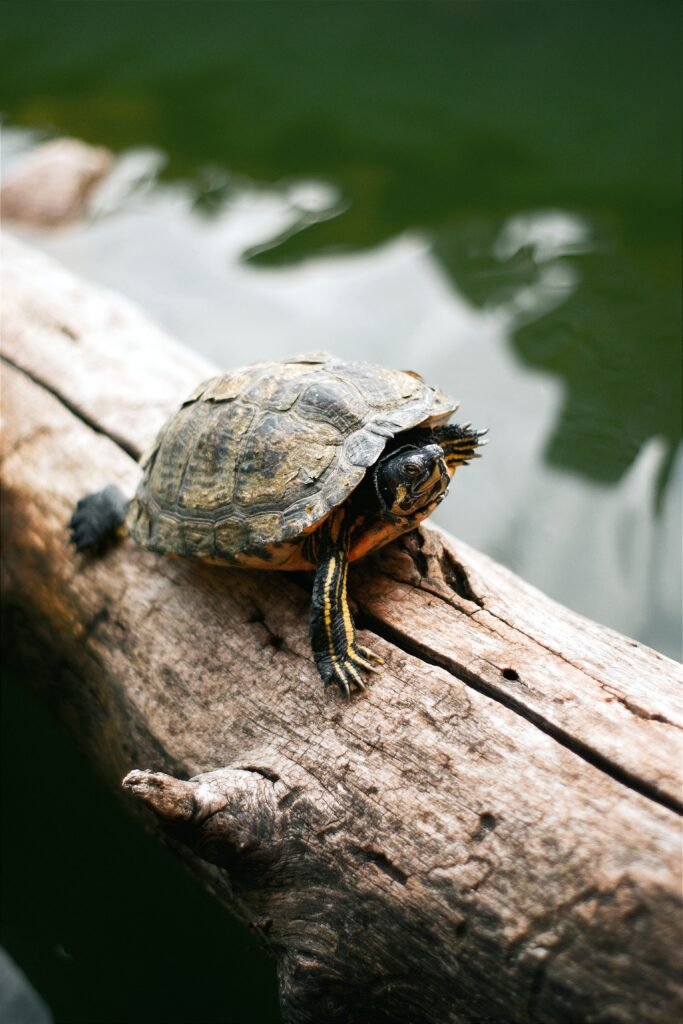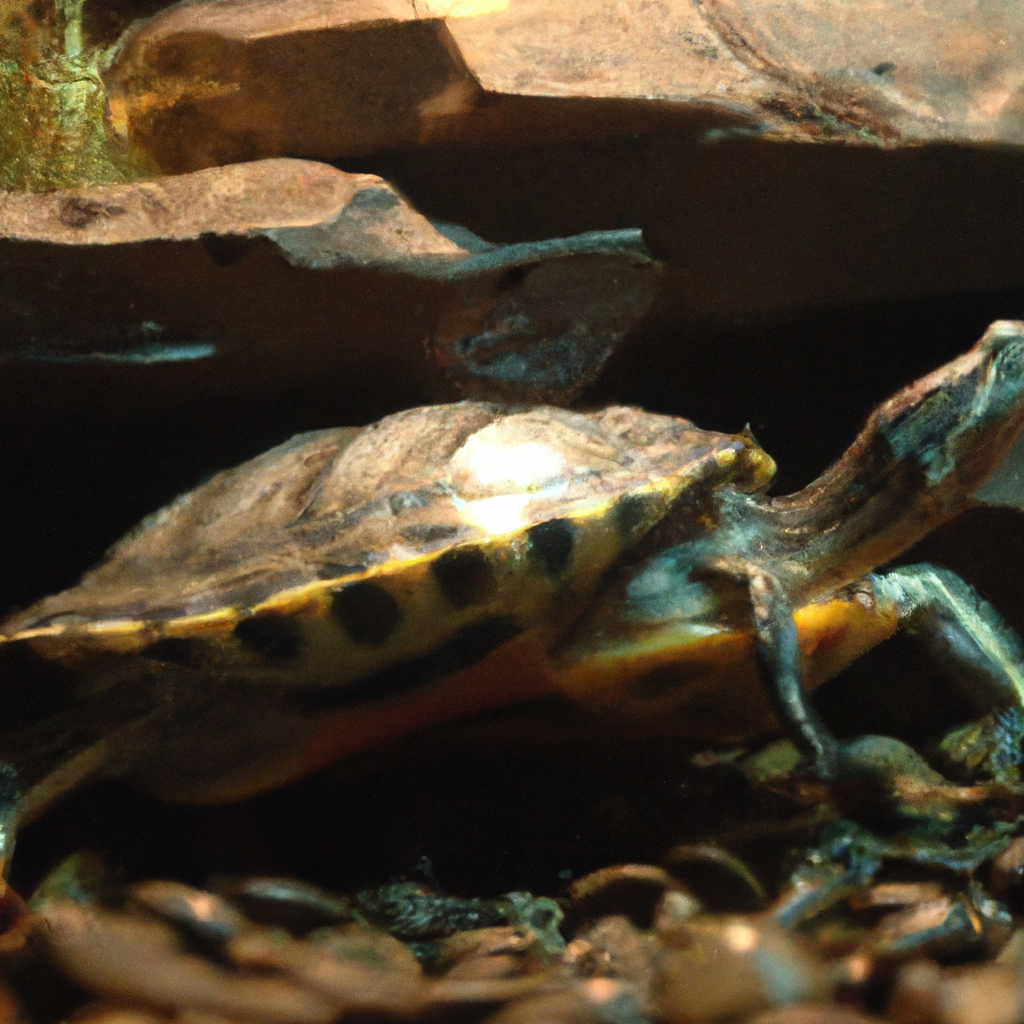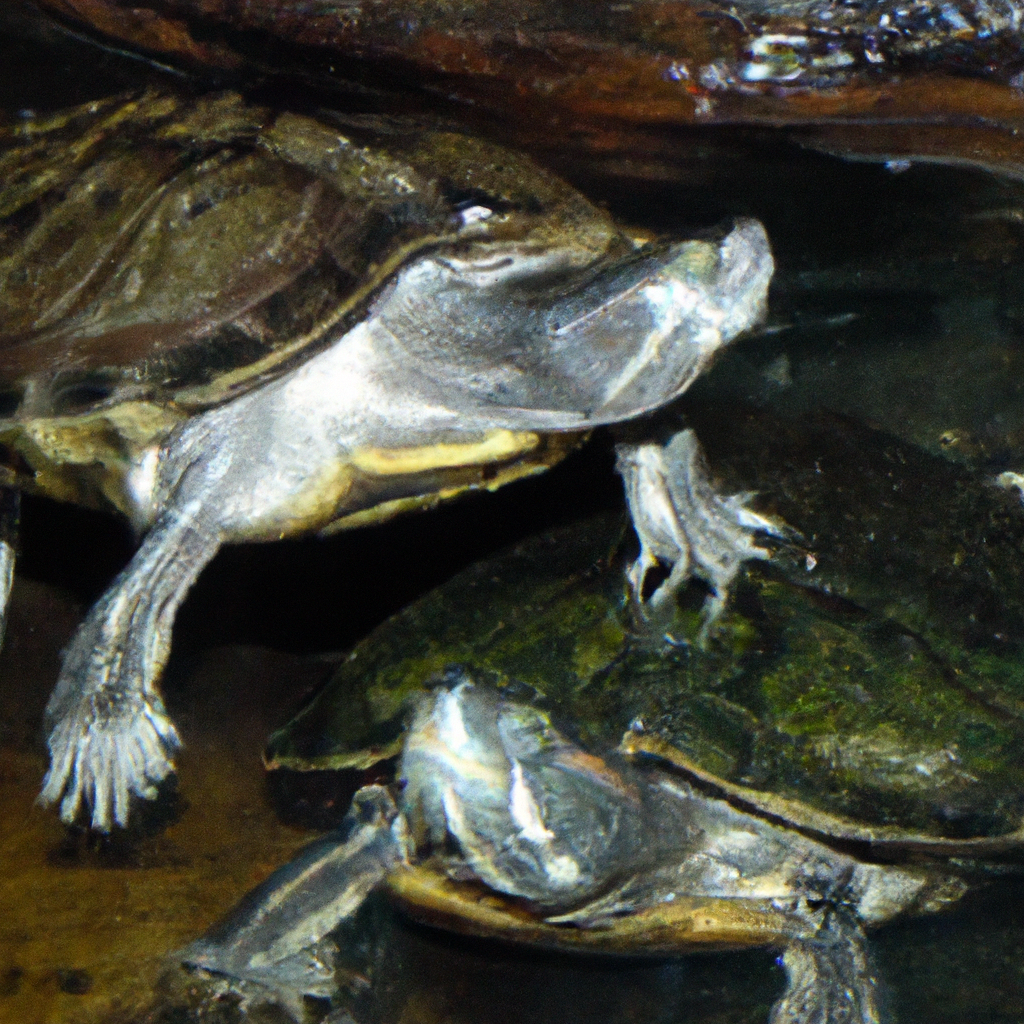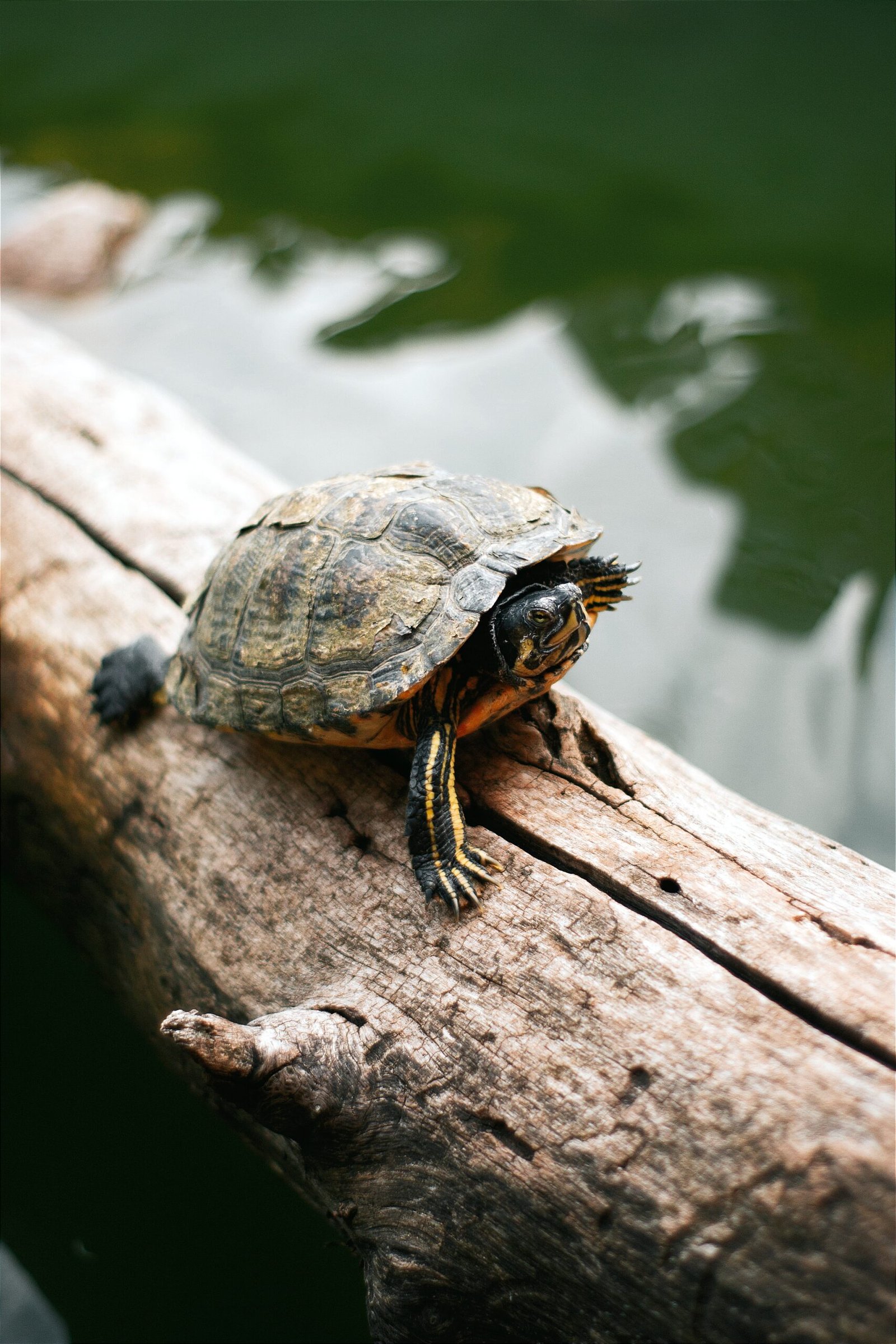Are you craving a delightful encounter with nature? Look no further than the enchanting “Tortugas Acuáticas.” Get ready to be captivated by the mesmerizing world of aquatic turtles, as you dive into an article that will transport you to a world where these majestic creatures rule the water. From their graceful movements to their unique adaptations, discover the hidden wonders of tortugas acuáticas and embark on a journey that will leave you in awe of Mother Nature’s creations. Brace yourself for a heartwarming and educational adventure like no other.

Introduction
An overview of aquatic turtles and their characteristics
Aquatic turtles, also known as water turtles, are a fascinating group of reptiles that have adapted to an aquatic lifestyle. These turtles spend the majority of their lives in water, whether it be in freshwater habitats such as lakes, rivers, and ponds, or in the open oceans for sea turtles. With their unique physical features, diverse diets, and interesting behaviors, aquatic turtles have captured the curiosity of people around the world.
Types of Aquatic Turtles
Freshwater turtles
Freshwater turtles are a diverse group that includes various species, such as the red-eared slider, painted turtle, and snapping turtle. These turtles are well-adapted to living in freshwater habitats and can be found in lakes, rivers, ponds, and even marshes. They are generally smaller in size compared to their sea turtle counterparts, with their shells measuring anywhere between 5 to 12 inches in length. Freshwater turtles are well-known for their ability to bask in the sun, often seen soaking up warmth on rocks or logs near the water’s edge.
Sea turtles
Sea turtles, on the other hand, are true inhabitants of the open ocean. There are seven recognized species of sea turtles, including green turtles, Loggerheads, and leatherback turtles. These majestic creatures are much larger than freshwater turtles, with adult individuals measuring around 2 to 4 feet in length and weighing anywhere between 200 to 1,500 pounds. Sea turtles possess streamlined bodies, powerful flippers, and a specialized shell structure that aids in their ability to navigate the vast oceanic waters. Unlike freshwater turtles, sea turtles cannot retract their heads and limbs into their shells.
Habitat and Distribution
Freshwater turtle habitats
Freshwater turtles can be found in a wide range of habitats around the world. They are commonly found in still or slow-moving bodies of water, such as lakes, ponds, marshes, and streams. These habitats offer the perfect conditions for freshwater turtles to thrive, as they provide a steady supply of food and shelter. Freshwater turtles are known to be highly adaptable and can even survive in brackish water, which is a mix of freshwater and saltwater.
Sea turtle habitats
Sea turtles spend the majority of their lives in the open ocean, with some species undertaking extensive migrations across thousands of miles. These turtles are often found in warm tropical and subtropical waters, as these regions provide the necessary conditions for their survival and reproduction. Sea turtles are highly migratory, and they may travel long distances between their feeding and nesting grounds.
Geographical distribution
Freshwater turtles have a widespread distribution, with species found on every continent except Antarctica. Each species typically has a specific range within a particular geographic area. For example, the red-eared slider is native to North America, while the painted turtle can be found throughout North America and parts of Central America. Snapping turtles are predominantly found in North America and parts of South America.
Sea turtles are primarily found in the warm coastal waters of tropical and subtropical regions. The distribution of each species is generally influenced by factors such as water temperature, food availability, and nesting sites. For instance, the green turtle is found in the coastal areas of more than 140 countries, while the Kemp’s ridley turtle has a more restricted distribution along the Gulf of Mexico and the western North Atlantic.
Physical Features
Shell
The shell is one of the most distinctive features of turtles. It acts as a protective armor for the turtle’s body and is made up of two parts: the top part, known as the carapace, and the bottom part, called the plastron. In freshwater turtles, the shell is typically oval-shaped and relatively flat, whereas sea turtles have a more streamlined and rounded shell. The coloration of the shell varies between species, ranging from shades of green and brown to vibrant patterns of red and yellow.
Limbs and claws
Both freshwater and sea turtles have limbs adapted for swimming. Freshwater turtles have webbed feet that aid in propulsion through the water, while sea turtles have elongated flippers that allow for efficient movement. These flippers are powerful and enable sea turtles to navigate the ocean currents with ease. Turtles also possess sharp claws on their feet, which they use for climbing, digging, and securing their grip on surfaces.
Head and jaws
The head and jaws of turtles are designed for their specific diet. Freshwater turtles usually have a broad, short snout and a beak-like mouth, which is ideal for crushing and grinding plant matter. Sea turtles, on the other hand, have a more pointed snout and a stronger jaw for capturing and consuming their prey, which includes jellyfish, sea grasses, and other small marine organisms. Interestingly, sea turtles have glands near their eyes that help them to excrete excess salt, allowing them to drink seawater without becoming dehydrated.

Diet
Herbivorous diet
Freshwater turtles, such as the red-eared slider, have a primarily herbivorous diet. They feed on a variety of aquatic plants, algae, and fruits. These turtles are known to be opportunistic feeders, consuming whatever plant material is readily available in their habitat. Their jaws are specially adapted to chew and shred plant matter, allowing them to extract nutrients from vegetation efficiently.
Omnivorous diet
Sea turtles are opportunistic feeders with an omnivorous diet, meaning they consume both plants and animals. The specific diet of a sea turtle varies depending on its species, location, and stage of life. Juvenile sea turtles often feed on small invertebrates such as crabs, shrimp, and jellyfish, while adult sea turtles primarily feed on sea grasses and algae. Some sea turtles, like the hawksbill turtle, have a specialized diet consisting mainly of sponges, making them essential for maintaining the health of coral reef ecosystems.
Reproduction
Mating behavior
The mating behavior of aquatic turtles is fascinating to observe. Male turtles often use various methods to court females, including swimming alongside them, head-bobbing, and gently biting their necks or limbs. Once a female has chosen a mate, the pair will engage in mating, which can involve multiple acts over a period of time. Freshwater turtles often mate during the warmer months, while sea turtles tend to mate near their nesting grounds.
Nesting and egg laying
Nesting is a crucial stage in the reproductive cycle of aquatic turtles. Female turtles will leave the water and search for a suitable nesting site, typically on sandy beaches or islands. The process of digging a nest hole using their hind flippers can take several hours. Once the hole is created, the female will lay a clutch of eggs and carefully cover them with sand to protect them from predators and the elements. Freshwater turtles typically lay smaller clutches of around 3 to 8 eggs, while sea turtles lay larger clutches ranging from 50 to 200 eggs.
Hatching and early stages
After an incubation period of several weeks to months, depending on the species and environmental conditions, the turtle eggs will begin to hatch. The hatchlings, equipped with a temporary egg tooth, use it to break free from their shells. Once emerged, these tiny turtles must make their way to the water, often guided by the moonlight reflecting off the ocean’s surface. This can be a treacherous journey as they face numerous predators, such as birds and crabs, along the way. Only a small percentage of hatchlings will survive to adulthood, as they must navigate a myriad of challenges in their early stages.

Behavior and Adaptations
Swimming ability
Aquatic turtles have adapted to an aquatic lifestyle and are highly skilled swimmers. Freshwater turtles use their webbed feet to propel themselves through the water, while sea turtles rely on their powerful flippers for propulsion. Sea turtles in particular have the unique ability to travel long distances across oceans, aided by their strong swimming abilities and the ability to navigate using Earth’s magnetic fields.
Camouflage and defense mechanisms
Both freshwater and sea turtles have evolved various adaptations to protect themselves from predators. Many freshwater turtles, such as the painted turtle, have a brightly colored plastron that acts as a deterrent to potential predators. When threatened, they can retract their heads and limbs into their shells for protection. In contrast, sea turtles rely on camouflage to blend in with their surroundings, making it difficult for predators to spot them. Some sea turtles also possess scaly skin and thick shells, providing an extra layer of defense against predators.
Feeding behavior
The feeding behavior of aquatic turtles varies depending on their species and habitat. Freshwater turtles often bask in the sun to regulate their body temperature, and they may use this time to forage for food on land or in the water. Sea turtles are known to spend long periods of time underwater, using their flippers to gracefully navigate through the water in search of food. Some sea turtles, like the loggerhead turtle, have powerful jaws that allow them to consume hard-shelled prey, such as crabs and mollusks.
Conservation Status
Threats to aquatic turtles
Aquatic turtles are facing numerous threats to their survival. Habitat loss, due to factors such as urbanization and pollution, is a significant concern for both freshwater and sea turtles. Pollution, specifically the presence of plastic in marine environments, poses a lethal threat to sea turtles, as they can mistake plastic bags for jellyfish and ingest them. Additionally, illegal hunting and the collection of turtle eggs for consumption or for the pet trade continue to be major threats to the survival of these remarkable creatures.
Conservation efforts
Fortunately, numerous organizations and individuals are dedicated to conservation efforts for aquatic turtles. These organizations focus on habitat protection, nesting site preservation, and public education to raise awareness about the importance of turtle conservation. Efforts are also being made to reduce plastic pollution and enforce stricter regulations against illegal hunting and egg collection. Many countries have implemented laws and regulations to protect these endangered species, providing hope for the future of aquatic turtles.

Interaction with Humans
Impact of human activities on aquatic turtles
Human activities have had a significant impact on the populations of aquatic turtles. Pollution, habitat destruction, and climate change have all played major roles in the decline of freshwater and sea turtle populations worldwide. Additionally, the pet trade has led to the illegal collection and trafficking of turtle species, further endangering their survival. It is essential for individuals and communities to understand these impacts and take steps to mitigate them for the long-term conservation of these magnificent creatures.
Turtle conservation and education programs
Conservation and education programs have become increasingly important in raising awareness about the importance of preserving turtle populations. These programs focus on educating the public about the threats facing turtles and providing guidelines for responsible turtle interaction. Many organizations offer opportunities for volunteers to participate in turtle monitoring and research projects, allowing individuals to contribute directly to the conservation efforts for aquatic turtles.
Interesting Facts
Lifespan and longevity
Aquatic turtles are known for their impressive lifespans. Some species, such as the Aldabra giant tortoise, can live for more than 150 years. Many sea turtle species have long lifespans as well, with some individuals reaching the age of 80 or more. The longevity of these turtles is a testament to their resilience and adaptability to their respective environments.
Ancient turtle species
Turtles have been around for an astonishingly long time, with their lineage dating back over 220 million years. Some turtle species have remained relatively unchanged throughout their evolutionary history, making them living fossils. For example, the leatherback sea turtle is often considered the most ancient living turtle species, having existed virtually unchanged for over 100 million years.
In conclusion, aquatic turtles are an intriguing group of reptiles with unique adaptations, diverse diets, and fascinating behaviors. From the diverse freshwater turtles to the majestic sea turtles, these creatures have captured the imagination of people worldwide. However, they face numerous threats, including habitat loss, pollution, and exploitation. It is our collective responsibility to protect and conserve these remarkable creatures so that future generations can continue to marvel at their beauty and resilience. By educating ourselves and taking action, we can ensure a brighter future for aquatic turtles in our oceans and freshwater habitats.

